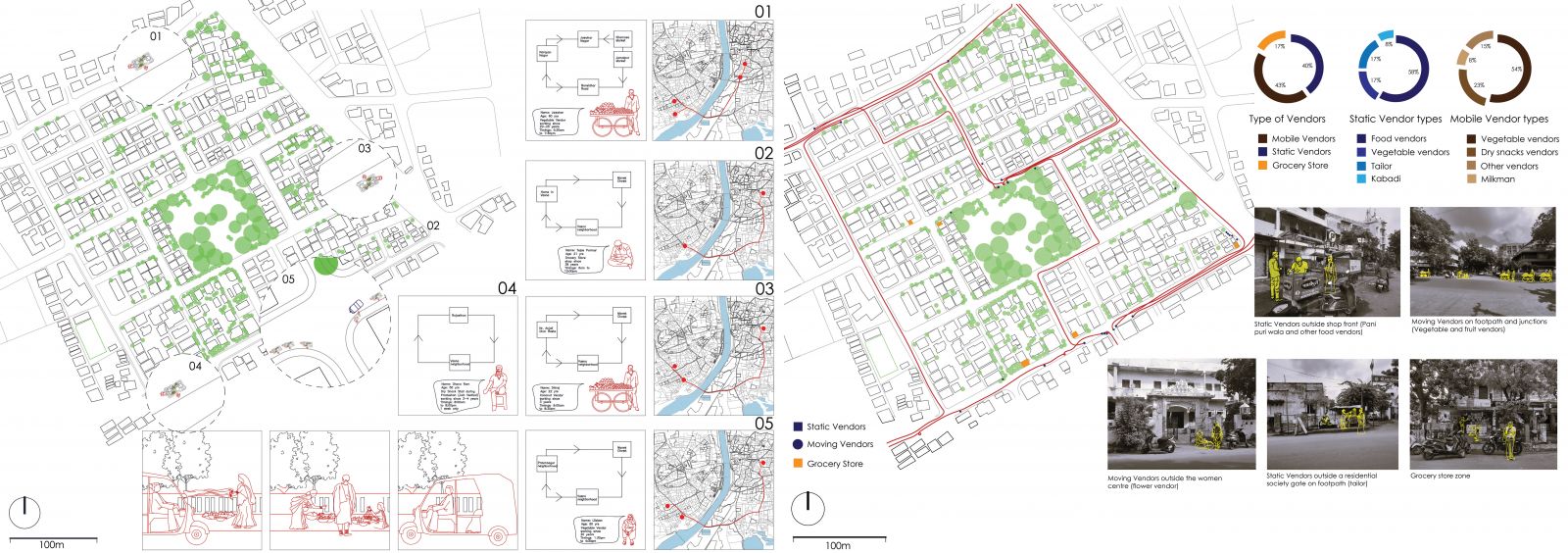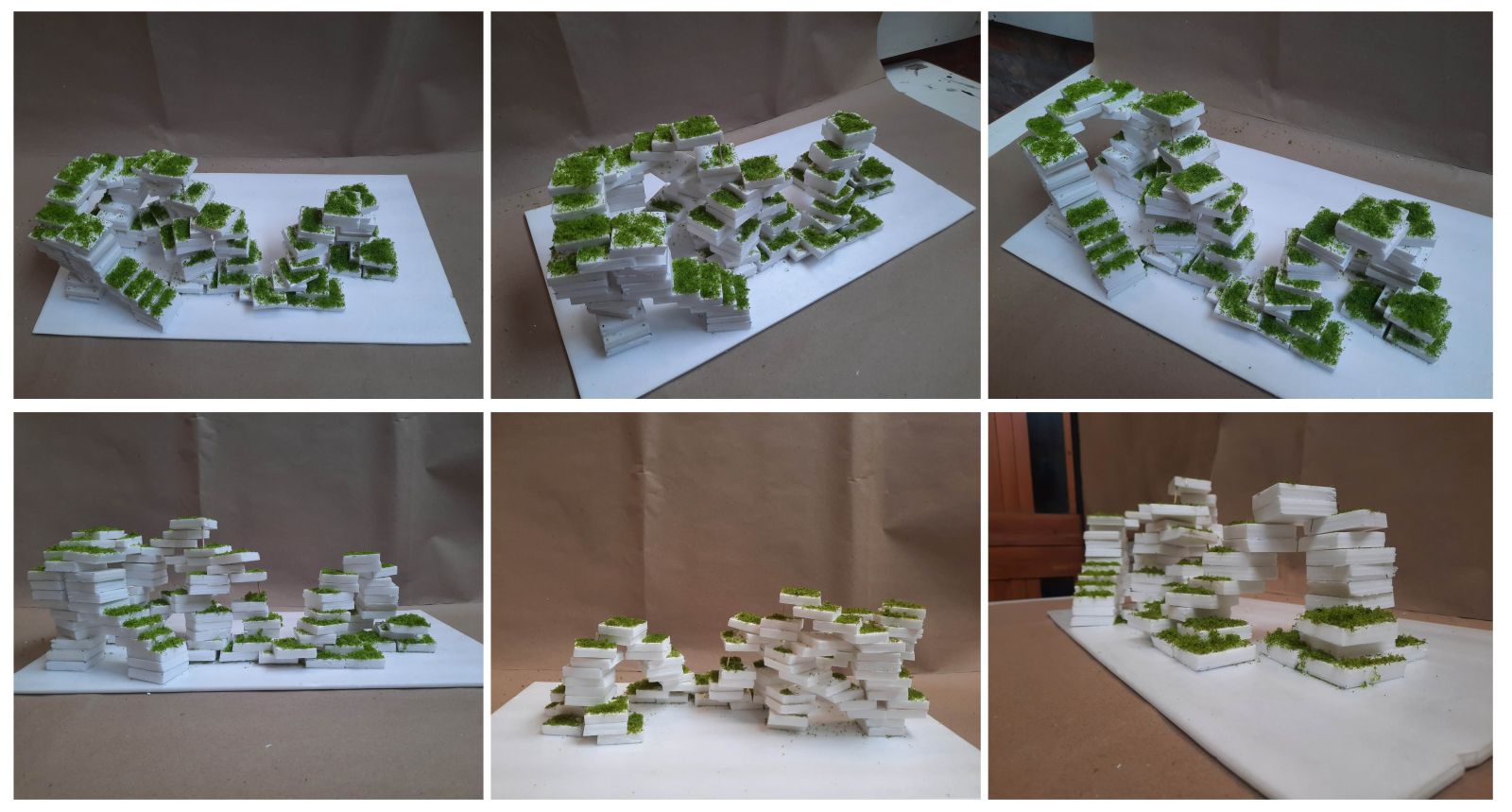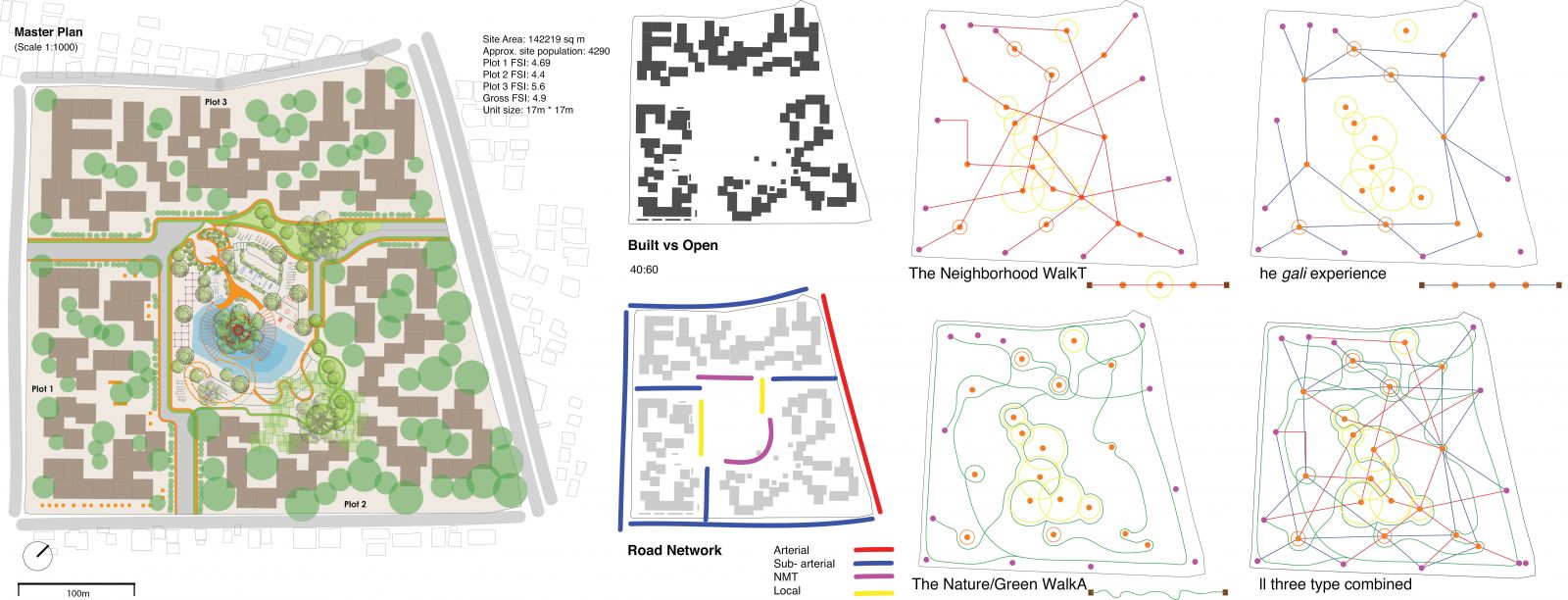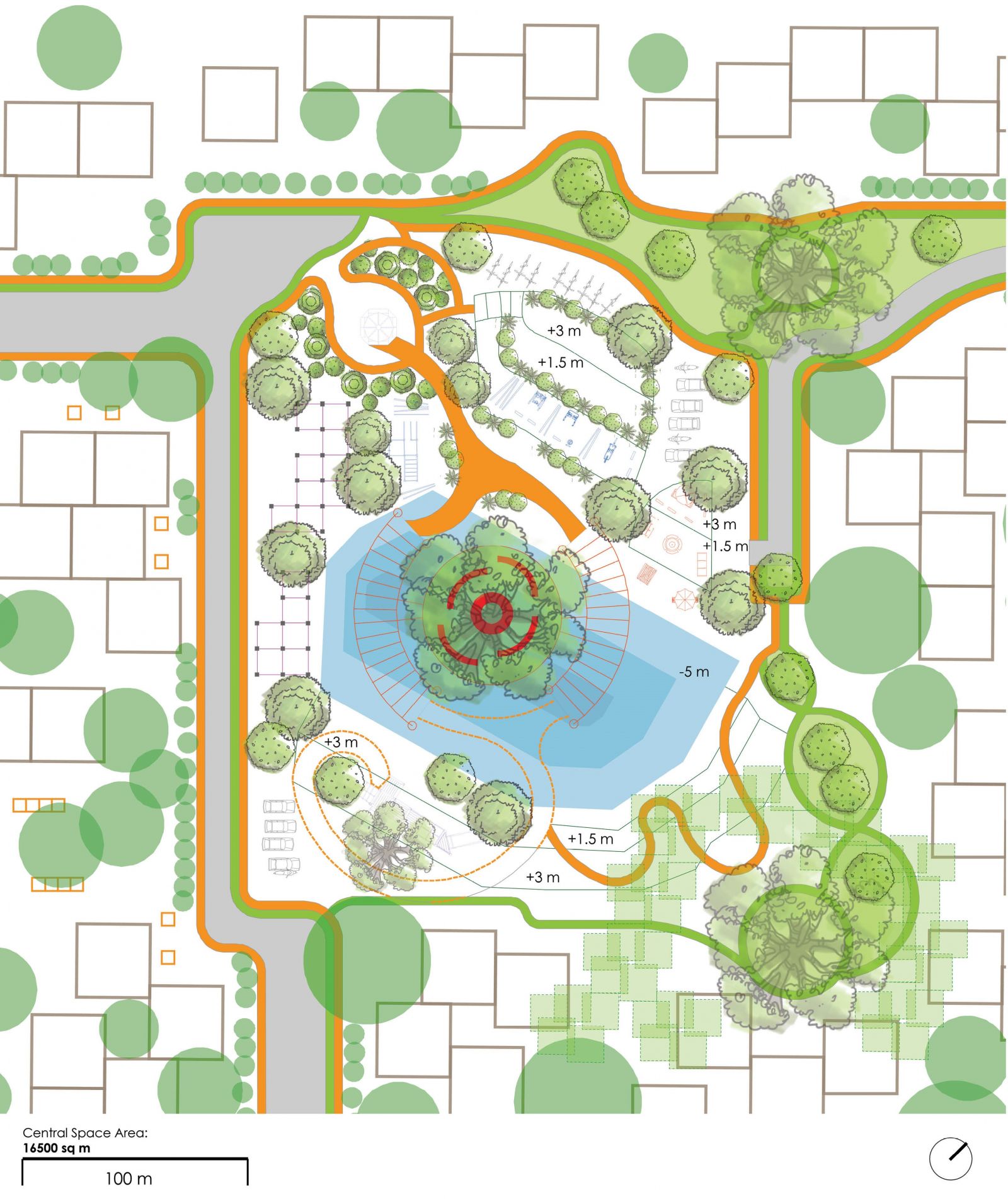- Student Archita Chanderprakash Varyani
- Code UG180076
- Faculty Planning
- Tutor/s Rajiv Kadam
- TA Abhirami Prabhakaran rk
1. Pedestrian-friendly neighborhood: 1.1 To enhance the walking experience 1.2 Pedestrianism to be supported with a social function- To create
attractive points
The Bansidhar neighborhood in Ahmedabad, Gujarat is not a pedestrian-friendly and
interactive neighborhood because of its lack of well-designed and maintained pause
points ( urban infrastructure). An individual limits his movement to the street, forming a
mundane routine. The lack of attractive points outside the garden makes the space
dull, isolated, and inactive. In the present scenario, the neighborhood cannot bring activity on the street, get people onto the streets, and encourage people to
engage and claim the streets rather than only stay in their homes.
Pedestrianism should be supported with a social function that could be achieved
through attractive public spaces and variations of or versatility in urban functions within
these spaces to engage pedestrians from their monotonous routine and enhance their
walking experience.
2. Personalization of spaces: 2.1 To create a sense of emotional security and sense of belonging
It is necessary to dissect and study the space to humanize our urban spaces into
effective public places. There are three essential components to study; outside,
threshold, and inside. People along with functions add character to these spaces
making them a place.
There is a significant gradation in the Bansidhar neighborhood. The central space, the Bansidhar garden, is associated with recreational activities like walking,
exercising, meditation, play area, etc. At the same time, the periphery is predominantly commercial
with a high footfall of informal vendors on the edges.
3. Self- Sufficient neighborhood
Based on the activity mapping and analysis of vendors and grocery stores, it was found that the Bansi Dhar neighborhood has a high potential to serve as a live-work neighborhood due to the presence of women's centers and the high footfall of vendors living in and near the neighborhood. This also creates a potential for vertical farming which is an integral component of the design. Hence the name Agrarian urbanism, generating livelihood and making Bansidhar a self-sufficient neighborhood.





